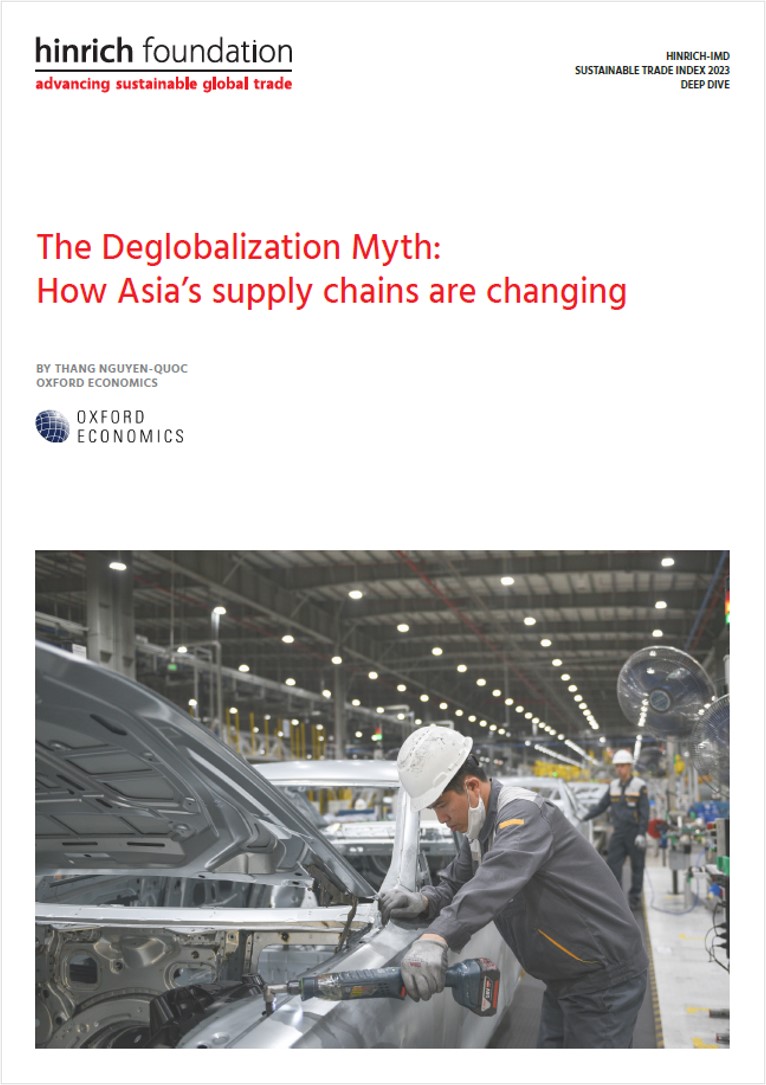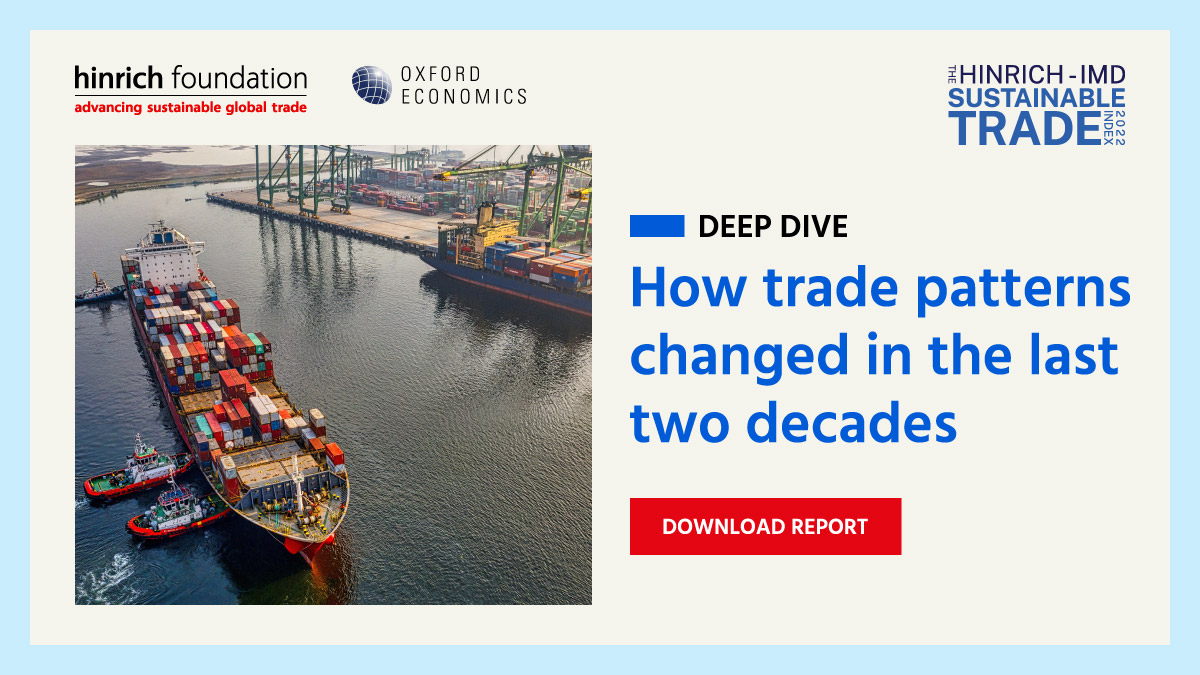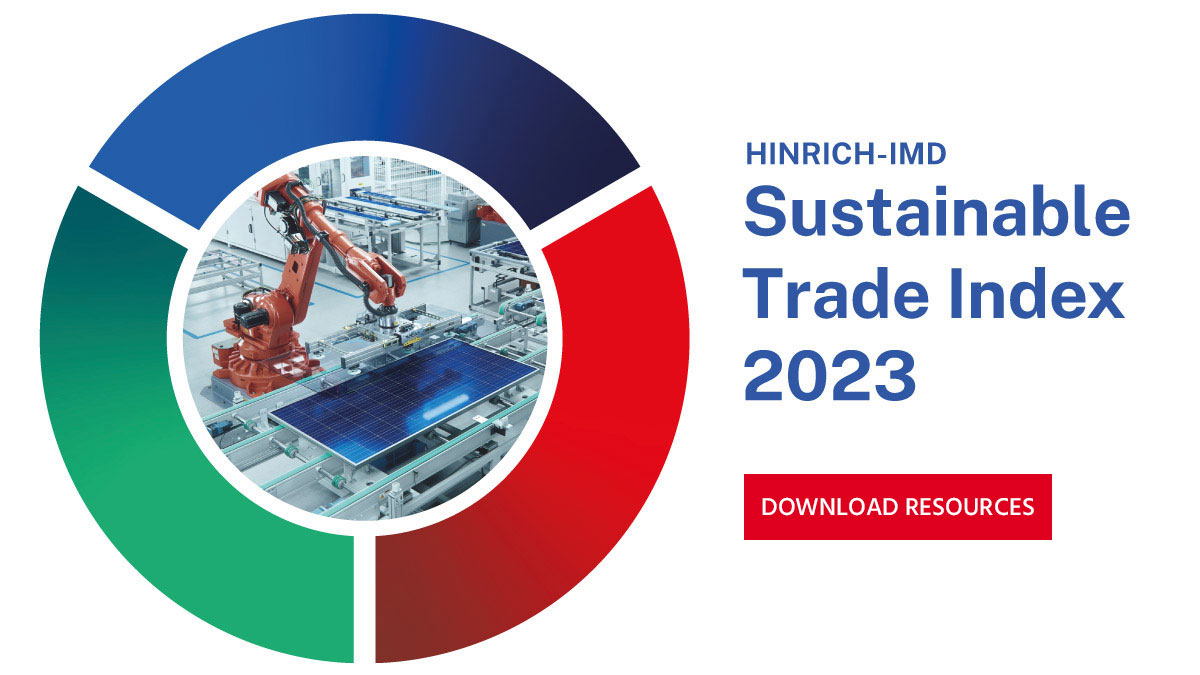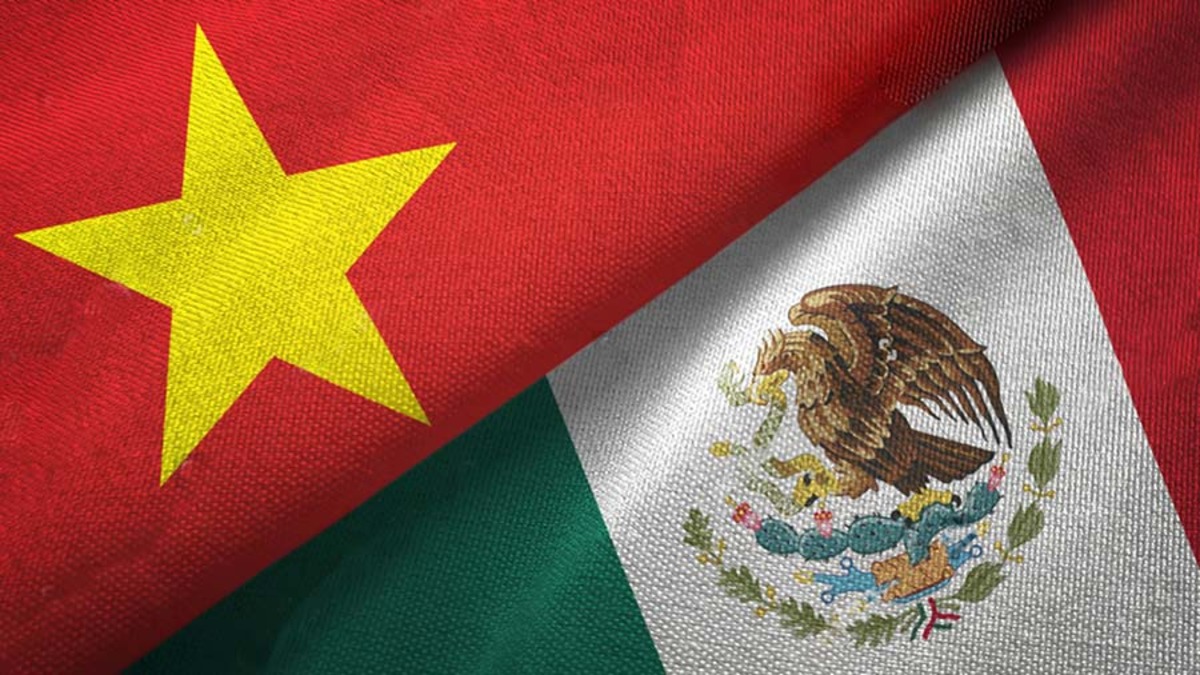Trade and geopolitics
The Deglobalization Myth: How Asia’s supply chains are changing
Published 09 January 2024
Despite talk of deglobalization, an econometric analysis of intermediate goods show global supply chains have continued to expand in the last five years. Amid a volatile world economy, swiftly evolving supply chains are minting new winners and losers in global trade.
Since the early 2010s, rising labor costs in China have caused many enterprises to explore alternative manufacturing bases and sourcing strategies to maintain their competitiveness. More recent disruptions such as the US-China trade war, Covid-19 pandemic, and sanctions on Russia have further prompted businesses to re-evaluate the resilience of their supply chains. Not only do they drive up the cost of trading due to higher tariffs and sanctions, they also added policy uncertainties that hinder the smooth and efficient operation of global production networks. These developments have led to various claims about the demise of globalization, the rise of near-shoring, and the decoupling of China from the supply chains of Western companies.
This report presents an up-to-date overview of global and Asian supply chains and assesses these different claims by focusing on data for bilateral cross-border trade of Intermediate Goods (IG), a granular class of products that more accurately represents supply chain componentry than the final goods used in most other analyses.
We find that global supply chains have continued to expand, despite talk of deglobalization and nearshoring. Intra-regional sourcing, measured by the share of IG imports originating from countries within the same region, has fallen across most major world regions, suggesting nearshoring may not yet be a prevalent strategy at the global level.
Download The Deglobalization Myth: How Asia’s supply chains are changing by Oxford Economics:

On the other hand, we find evidence that decoupling has materialized for China’s trade with the US and Japan – China’s share of IG imports into the US fell from 18.5% in 2018 to 14.1% in 2022. This share dropped to 11.4% in the first half of 2023.
In contrast, China has gained importance as a source of inputs shipped to several Group of Seven (G7) developed economies. For example, between 2018 and 2022, China’s share of total IG imports increased from 11.1% to 15.9% in Germany, and from 10.3% to 15.1% in the United Kingdom.
While China remains the center of Factory Asia, the Asia-Pacific’s IG trade has been diversifying. A few Asian countries are emerging as “hotspots” of IG trade growth in this volatile and increasingly tense geopolitical global environment. In particular, Vietnam and Indonesia registered double-digit growth in annual IG exports during this period.
High-level comparative analysis of these “hotspot” economies reveals markedly different economic structures and geopolitical orientations. For example, Vietnam has made strides in becoming more important for international sourcing for both the US and China. This reflects not only the needs of Western multinationals but also Chinese enterprises looking to expand production base abroad. FDI inflows from China to Vietnam have surged in 2023 and are now the largest of any country to Vietnam. In contrast, India has become more important for US supply chains, but less important for China’s supply chains.
Despite escalating geopolitical tensions, China has become increasingly reliant on Taiwan for its inputs. Taiwan’s share in China’s IG imports increased from 12.2% to 14% between 2018 and 2022, partly driven by higher demand for advanced semiconductor products during the pandemic that drove up prices for these products. Taiwan produces more than 60% of the world’s semiconductors and more than 90% of the most advanced ones.
The diversity of economic structures and US-China orientations across these “hotspot” economies suggests that there is more than one winning strategy to navigate the changing landscape of global supply chains. Expect global supply chains to keep evolving, in the shadow of rising geopolitical tensions and new rounds of industrial policies worldwide.
© The Hinrich Foundation. See our website Terms and conditions for our copyright and reprint policy. All statements of fact and the views, conclusions and recommendations expressed in this publication are the sole responsibility of the author(s).
Author
Oxford Economics
Related Articles

How trade diversification changed in the last two decades
14 February 2023

“A smaller planet”: Friendshoring’s poorer and less secure world
31 October 2023

Do national security concerns spell doom for truly global supply chains?
14 December 2022

How trade diversification changed in the last two decades
14 February 2023

“A smaller planet”: Friendshoring’s poorer and less secure world
31 October 2023

Do national security concerns spell doom for truly global supply chains?
14 December 2022




